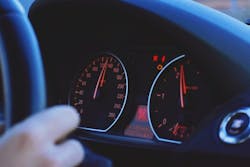Feb. 17, 2021—The average age of cars and light trucks is increasing across the U.S., which means good things for quick lubes.
In mid-2019, the typical light vehicle in the U.S averaged approximately 22,000 more odometer miles than ten years earlier, according to the 2021 Lang Aftermarket Annual. Light vehicles averaged 123,000 miles and trucks averaged 125,000 in 2019.
The organization projects those numbers increased by roughly 3,000 miles in 2020 and have no signs of slowing down, especially with the lingering effects that COVID-19 is expected to have on the market.
The logic for why this helps quick lubes is simple, said Jim Lang, president of Lang Marketing. The longer that cars are on the road, the more product they are likely to use as the car continues to age. Not every mile driven is created equal. The first mile for a brand new car is less work for the vehicle than one mile driven by a vehicle with 100,000 miles. And as vehicles wear down, naturally that’s going to lead to a greater frequency of oil changes, simple brake repairs and other quick maintenance.
“A 10-year-old car that travels 10,000 miles doesn’t generate as much product as a 12-year-old car that travels 10,000 miles,” Lang said. “As these vehicles remain on the road longer, each mile that they travel generates more aftermarket volume than younger vehicles.”
The increase may very well mean a shift in amount and types of oil a shop must maintain as the gap between new and old cars continue to grow in miles and years.
It will also often lead to an additional cycle of products, like an extra starter over the life of a vehicle or an additional set of brake pads, which wouldn’t have occurred had the vehicle been taken off the road earlier.
Lang sees the reason for this increase, and a likely continued increase, for several reasons. First, vehicle technology continues to advance and the innovation is keeping cars on the road longer. Vehicles also don’t drastically change their styles year-over-year like they did in past decades, which drove consumers to frequently upgrade for the new look. The cycle is much more every three to four years now, Lang said.
Secondly, is the current sales market. The price of buying new vehicles continues to rise out of the average consumers price range. Vehicle sales were also down significantly in 2020, Lang said. Because of this, he projects record odometer levels in 2021 and 2022 as less and less new vehicles are on the road.
Another interesting trend Lang believes shops should be aware of is the growing gap between foreign and domestic nameplates on the road. According to Lang’s study, foreign nameplates have accounted for over 50 percent of new sales, meaning the average mileage of foreign nameplates will continue to lower.
This impact is twofold. First, shops need to be aware of the changing technologies in foreign models as they become a greater percentage of vehicles on the road and what specific products those vehicles may need over domestic vehicles.
“Operators must be aware of that and have the tools and the knowledge to repair those foreign nameplates as well as the domestic nameplates,” Lang said.
Secondly, this means domestic vehicles will most often be the vehicles that are coming in for an additional cycle of products as the odometer levels continue to rise. By 2019, domestic cars pushed their average odometer miles to over 150,000 miles, significantly higher than 123,000 average accumulated miles for all light vehicles during 2019.
